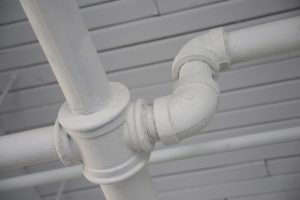
Knowledge Base / News
We’re right at that time of year when many businesses either shut down for the holidays, or have a skeleton crew manning the office or warehouse.
We’re also at the time of year when weather conditions turn much worse for most of the world; cold snaps, snow, and ice all can wreak havoc on an organization if something were to happen. Many business continuity plans are designed to help protect you against a possible disruption. Does your business continuity plan help plan for your office potentially being unmanned for longer periods over the holidays?
 Preparing for disaster
Preparing for disasterCold, inclement weather can cause any number of potential disasters that can bring down a business. Unexpected storms, or storms that pack much more of a punch than anticipated, can cause prolonged power outages. Those outages in turn can lead to loss of productivity if your business can’t open, or even worse, critical data loss if the outage is sudden and your backup power doesn’t turn on immediately.
Dropping temperatures can also cause just as many problems without a storm needing to be involved. Frozen pipes that burst can cause immediate and extensive damage in just about any facility. Employees that use a space heater to stay warm in the winter may forget to turn It off when they leave over the holiday break, inviting the potential for overheated wiring.
The holidays are a time meant for family and friends, not worrying about the office, your data, or your assets. This is especially true when the office is closed for an extended period of time and no one’s on site to physically check on the facilities.
Everyone’s heard the horror stories about unexpected disasters that happen over the holidays to businesses. How about the burst pipe on Christmas Eve that resulted in the entire staff rushing in on Christmas day in an attempt to rescue what equipment and paperwork they could?
Or how about the warning over the Fourth of July weekend about excessive temperatures that caused employees to drive in to the office from three different states to make sure servers weren’t melting down? Of course these issues can’t happen on a normal Tuesday morning… unmanned facilities for longer periods of time than normal over the holidays are ripe for disaster.
 Part of your organization’s business continuity plan should involve identifying threats to your ability to operate in an ongoing manner. With the specter of hacking and data loss looming, many organizations focus on protecting their network and data from intrusion or internal misuse.
Part of your organization’s business continuity plan should involve identifying threats to your ability to operate in an ongoing manner. With the specter of hacking and data loss looming, many organizations focus on protecting their network and data from intrusion or internal misuse.
While focusing on data loss due to network events is an important part of maintaining business continuity, the two examples we noted above were both environmental threats that could have led to major business disruptions.
The difference between the two? In the frozen pipes example, it wasn’t until physical damage (and water dripping down the walls 5 floors below the burst pipe) was actually noted before action was taken… and by then it was too late. In the excessive temperatures example, the environment was being monitored so the employees were alerted immediately and took action to prevent downtime.
By making sure environment monitoring is part of your business continuity plan, you’re ensuring that factors such as temperature, humidity, flood/water, power, and smoke are continually monitored just as much as you’re monitoring your computer network against intrusion. Data loss and business disruption events can come from many sources, and monitoring as many as you can is critical to your business continuity plan.
Is your business putting together or implementing a business continuity plan? Is environment monitoring part of that plan? If not, contact us today. With nearly 30 years of experience in environment monitoring, we can help identify key areas you should be monitoring, and help you put a plan in place. Don’t delay! Always remember… proactive monitoring is better than disaster recovery.

You may find Windows Command Prompt at the following path:
To run Windows Command Prompt as an administrator:
| Current S models | Current E models |
|---|---|
| Room Alert 32S | Room Alert 32E |
| Room Alert 12S | Room Alert 12E |
| Room Alert 3S | Room Alert 4E |
| Room Alert 3E | |
| S models | E & W models |
|---|---|
| Room Alert 32S | Room Alert 32E |
| Room Alert 12S | Room Alert 12E |
| Room Alert 3S | Room Alert 4E |
| Room Alert 3E | |
| Room Alert 3W |
| Model |
|---|
| Room Alert MAX |
| Room Alert 32S |
| Room Alert 12S |
| Room Alert 3S |
| Room Alert 32E/W |
| Room Alert 12E |
| Room Alert 4E |
| Room Alert 3E |
| Room Alert 3 Wi-Fi |